Introduction

The Legends of Runeterra community is quite active tournament-wise, and many play big tournaments, such as the Runeterra Open, frequently. As a result, it is very common for those players to study decks' win rate statistics.
However, many players get a bit confused when it is time to analyze these numbers, and get lost when they start building their lineups considering these stats.
Which is why I've brought you, in this article, the method I use when I analyze stats, which brought me to a Runeterra Open's Top 16, and actively makes me incredibly consistent in grassroot tournaments.
Translating Ranked Queue Numbers to the Competitive Scene
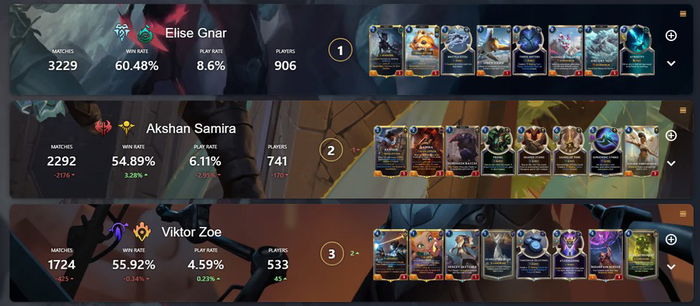
The competitive meta is quite different from the ranked queue meta. However, even then, it is on the ranked queue the meta is formed, and it is there decks get popular.
A list will hardly burst the bubble and become an active deck only through the competitive scene, without appearing in the ranked queue. The last time that happened was with Ryze, and some versions of Targon Karma Sett, which is why you need to keep an eye out for the most played decks when you analyze the data websites, because, after all, they will also be the decks you'll most likely find in tournaments, depending on the meta.
On data websites, you can notice that not always the list at the top of the ranking of most popular lists will have the highest win rate. It is common for decks that have more than a 1000 matches registered on the site to orbit around 55% win rate, and, in case the list goes over that, it is usually because the deck is way too strong.

On the other side, you'll see that, if you use the filter to show only the decks with the best win rate first, these lists won't have as many games, and that can really confuse players. Because, just like the decks at the top of the popularity ranking are not necessarily the strongest, the ones with the highest win rate might also not be the strongest.
After all, which deck is the strongest, then?

The strongest deck will always be the one which has the best popularity rate, in combination with its win rate. If a deck appears in the top 5 most used decks, and is also one of the highest-winning decks, this list is a strong candidate to be the best deck.
That is Elise Gnar's case, which was at the top of both rankings, and was also present in the winning lineups of the Eternal Runeterra Open in September.
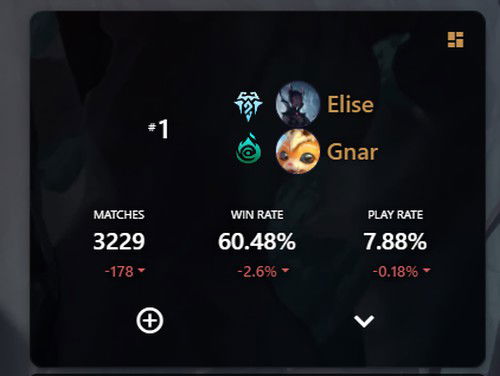
Let's see some situations which can make players misjudge a list based on their stats.
Decks with bad win rate, but which perform really well in tournaments

Some decks might appear with below-average win rates, but they are great lists for tournaments. A recent case was the Samira Seraphine list, which won one of the Runeterra Opens, and appeared in many of the players' lineups, but it only had a 50% win rate in the ranked queue.

I suggest that you, in addition to looking at the data on these websites, also keep an eye out for the grassroot tournament results. But don't look up only the winning lineups: always look up the top 4 lineups, or top 8 lineups, so you can really grasp what elite players are playing.
In some tournaments before that Runeterra Open, many players were already bringing Samira Seraphine, as it was a great list for Stunning units and destroying landmarks, resources which were very valuable at the time.
The best place to look up tournament results is @LoR_Santupea92's Twitter profile.
Decks made popular due to famous personalities in the community

It is common to find, out of nowhere, decks with high play rates, but that are hard lists to fit into the competitive scene. That happens many times because a famous content creator, or competitive player, had a lot of success with that deck, and it became popular in the community.
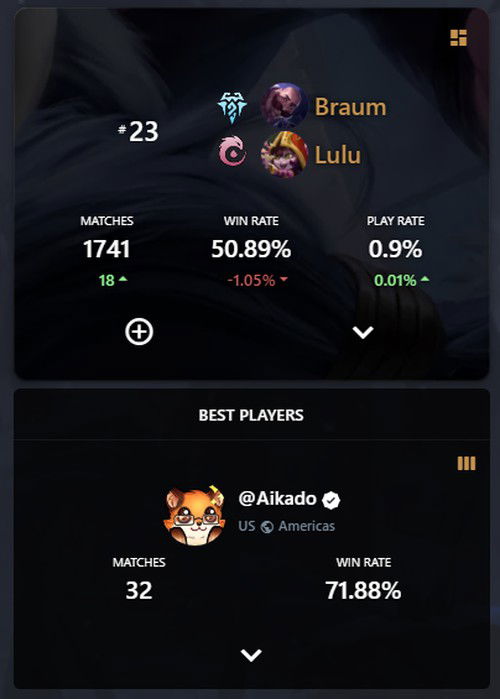
Braum Lulu was made popular by streamer Aikado, but, despite being an ok deck to play in the ranked queue, it didn't perform well in grassroot tournaments, except for the first week it was discovered.
I suggest you try the lists made popular by these famous players playing against other tournament decks, and not on the ranked queue. Only then you'll know if the deck truly works competitively.
Decks which are only strong in the ranked queue

Usually, the tournament meta will always be a bit slower than the ranked meta. Many players build their lineups considering they'll be playing against Aggro, Midrange and Control lists, all at once. And, for that reason, the best strategy, many times, is bringing slower decks which can interact well with the enemy board - unlike the ranked queue, in which you'll find decks which don't interact in any way with their opponent.
Considering that, it is common to see some decks appear in data websites at the top of the highest win rates ranking, but they perform really badly in tournaments. That happens because that type of deck usually loses instantly if their opponent has any sort of answer to their units. That is the case for the Teemo Elusives list, which only works in the ranked queue.

I suggest you don't bring decks which don't have any interaction, or that easily lose to removals when you're playing tournaments. The competitive meta is quite different from the ranked queue, and, despite some lists, such as Teemo's, being considered one of the best, these decks will hardly bring you far in tournaments.
Stats on Bad and Good Matchups

These numbers are the most important ones, and they are also the ones we need to be the most careful about when examining data. You'll realize that, on these websites, you have access to deck matchups stats, and the site will categorize the decks into good or bad matchups, and whether the matchup goes over 50% win rate.
But, if your list has a 49% win rate or even 50%, that doesn't mean the deck is bad against the other list you're analyzing. Actually, the matchup is quite balanced.
In the example below, we're seeing a few lists which are supposedly bad matchups against Elise Gnar.
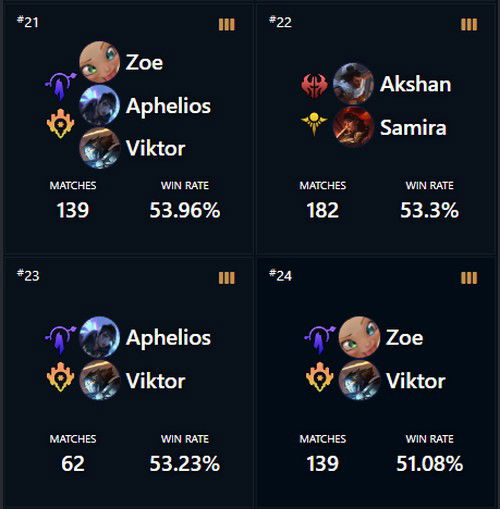
These decks have tools capable of winning against this Elise list, but most times they can't finish matches because of many factors, and one of them is usually that players don't know how to pilot these lists well. A very extreme case is Seraphine Samira, which is a list which has numerous resources to deal with Elise's threats, and performed well at the hands of competitive players against that deck at the Runeterra Open. However, it is a deck which doesn't perform well against Elise in the ranked queue, because ranked queue players usually don't know how to play with this archetype.
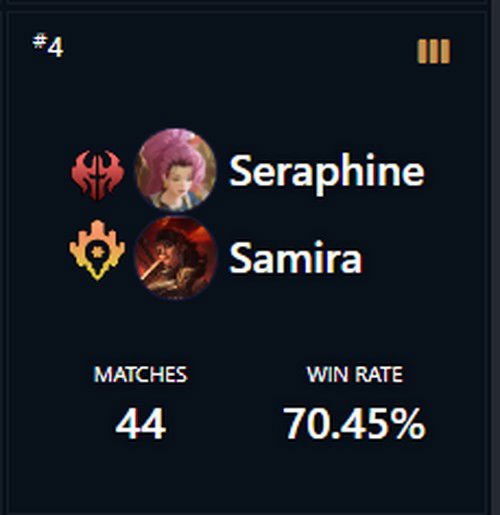
I suggest you don't pre-judge certain matchup's win rate stats, as many times there won't be enough games to analyze if indeed a deck is good against another. Firmly believe only in numbers based on matchups with over 100 games registered. For the rest, those which don't have 100 matches registered, assume the win rate isn't accurate, and train that matchup with your friends.
Final Words

If you read this far, now you know how to analyze the deck stats correctly on websites which analyze Runeterra numbers.
Don't forget to share and comment on this article on social media. See you next time!









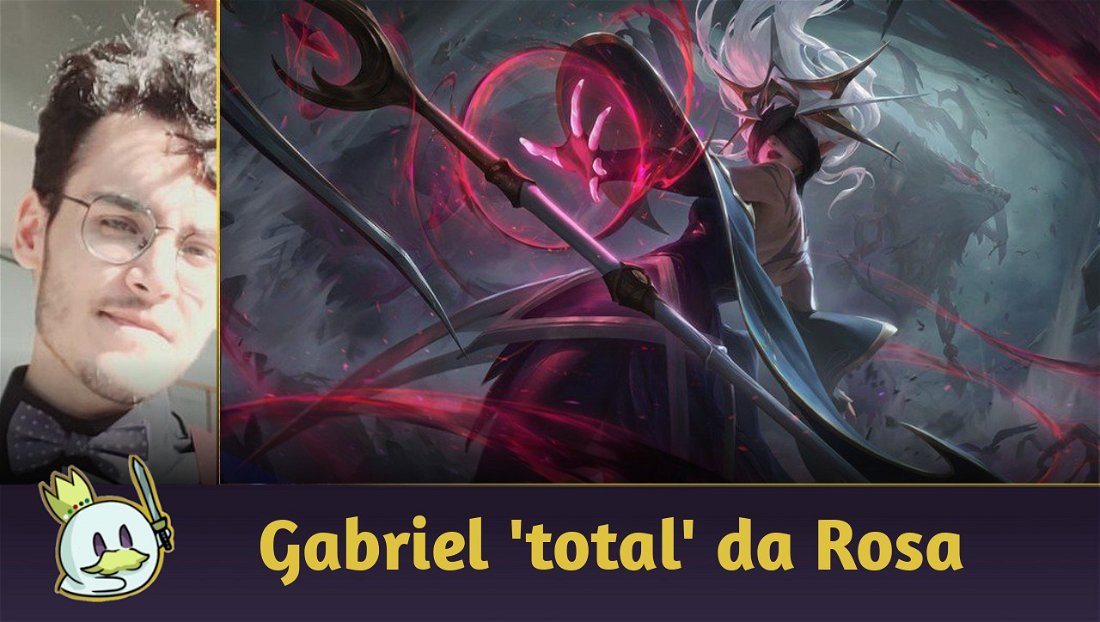
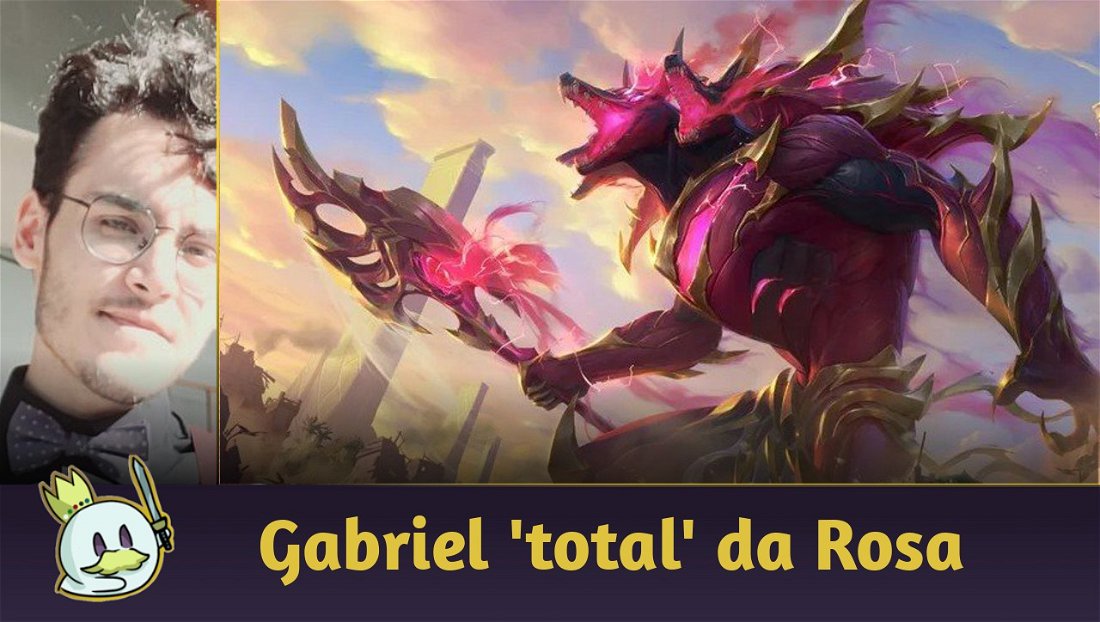



— Comments 0
, Reactions 1
Be the first to comment